Today marks the beginning of Insect Week (21-27 June) – a week to learn more about the science and natural history of insects. We are highlighting some of the insect heroes, and villains, CABI scientists work with on a regular basis.
Scientists at CABI’s Egham laboratory work with a range of insect species, from plant-parasitic nematodes, to invasive pests such as the apple snail, which has recently been identified in Kenya. Through their research, CABI scientists have reached thousands of farmers around the world, helping them tackle invasive alien species, crop pests and diseases.
Listronotus elongatus vs Floating Pennywort
Introduced to Britain in the 1980s, Hydrocotyle ranunculoides, commonly known as floating pennywort, is rapidly spreading through UK and mainland Europe. Originating in Central and South America, it forms dense, impenetrable mats, which rapidly dominate water bodies, outcompeting native species. Current mechanical and chemical control methods are labour intensive and can be limited due to the sensitive areas in which it grows.
The hero: Listronotus elongatus
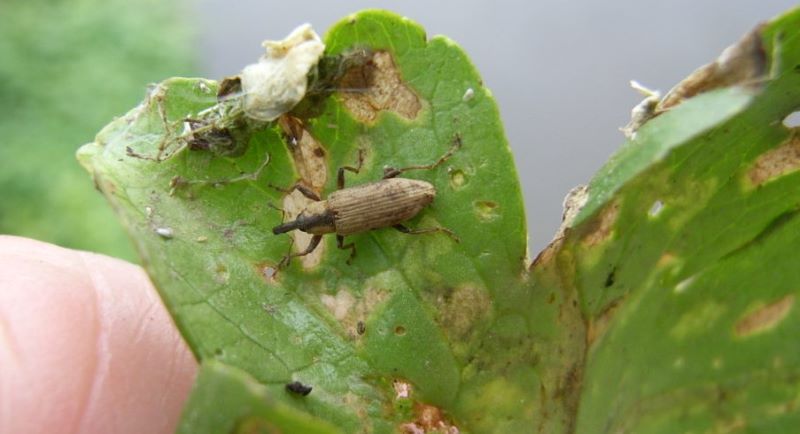
Listronotus elongatus, a stem-boring weevil, is a floating pennywort specialist. Adult weevils feed mainly on the upper surface of the leaves and the female lays eggs in the fleshy plant petioles (the stalks that attach leaves to plant stems). The larvae mine the petioles for food, causing the plant to collapse.
Listronotus elongatus was prioritised as a potential biocontrol agent after CABI scientists surveyed the weed in its native Argentina. An application to release the weevil in England has undergone comprehensive peer review and consultation and is now subject to ministerial approval.
Find out more about CABI’s work on floating pennywort and Listronotus elongatus:
https://www.invasive-species.org/species/floating-pennywort/
https://www.cabi.org/isc/datasheet/28068
Stenopelmus rufinasus vs Azolla
Native to the Americas, azolla (Azolla filiculoides) was introduced into the UK in the 1840s. It forms dense mats in slow-moving water systems, reducing oxygen flow and blocking out light – a precious resource for native aquatic plants.
The hero: Stenopelmus rufinasus
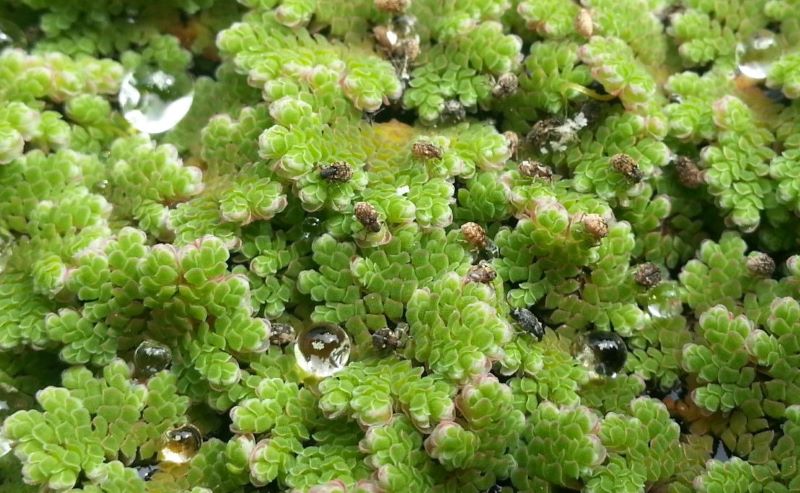
Another weevil, Stenopelmus rufinasus, native to North America but naturalised in the UK for 100 years, has proved a highly effective biocontrol agent. All mobile life-stages of the weevil (adult and larvae) feed on the plant, though it is the larvae that cause the most damage.
In the mid-2000s, CABI investigated the potential for mass rearing and redistributing the weevil to control outbreaks. In England and Wales, it is recognized as ordinarily resident and in Scotland the weevil is released under licence. CABI now ships the weevil throughout the summer months to customers affected by azolla (www.azollacontrol.com).
Find out more about CABI’s work on Azolla and Stenopelmus rufinasus:
https://www.invasive-species.org/species/azolla/
https://www.cabi.org/isc/datasheet/8119
Aphalara itadori vs Japanese knotweed
The well-known invasive species, Japanese knotweed (Fallopia (= Reynoutria) japonica), was brought over to the UK from Japan in the mid-19th century as an ornamental plant. However, over time it has become widespread in a range of habitats, particularly roadsides, riverbanks and derelict land. It causes serious problems by displacing native flora and damaging infrastructure.
The (potential) hero: Aphalara itadori
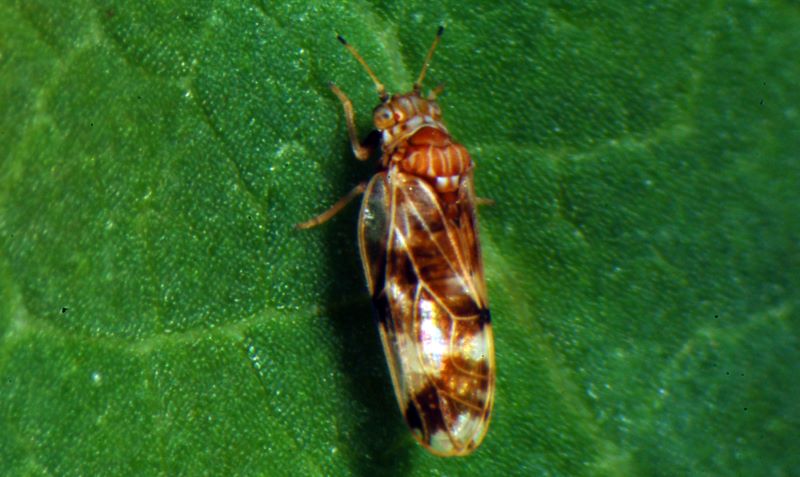
The psyllid Aphalara itadori is a true knotweed specialist, sucking the sap from the plant. Although only 2mm in length, it proved capable of causing significant damage in extensive lab testing.
One tiny psyllid on its own is harmless, but once freed from its natural enemies it has the potential to reproduce freely and continually increase the impact on its knotweed hosts. Early trials have been disappointing but a better climatically match strain is being released this year and hopes are high it will find our climate as much to its liking as our knotweed.
Find out more about CABI’s work on Japanese Knotweed and Aphalara itadori:
https://www.invasive-species.org/species/japanese-knotweed/
https://www.cabi.org/isc/datasheet/23875
Tackling Fall armyworm
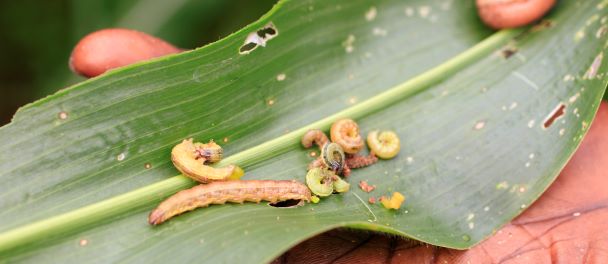
Fall armyworm(Spodoptera frugiperda) is recognised as one of the most damaging invasive alien species. The pest is a major threat to food security, particularly in Africa where it wreaks havoc for smallholder farmers.
In 2016, the Fall armyworm (FAW) was found in Africa for the first time. The life cycle of FAW and its ability to spread and reproduce quickly makes it an incredibly successful invasive species. It’s now spread to Asia, Australia and the Pacific Islands.
CABI scientists are working hard to understand how fall armyworm spreads and how farmers can control it in an environmentally friendly way. One area of research is parasitoids – insects that complete at least one of their life stages in the pest – as possible fall armyworm biocontrol agents.
Among the parasitoids, are insects that parasitize the eggs, larva and pupal stages and some that parasitize the pest during multiple life stages. The parasitoids lay their eggs inside FAW and prevent the further development of the host to adult.
The (potential hero): Telenomus remus
Telenomus remus are small parasitic wasps that feed on FAW eggs. The wasp larvae hatch and develop inside the egg. Once fully grown, the adult perforates a small hole in the FAW egg, through which it emerges. After ‘hatching’, parasitoids travel around the mass of eggs from which they emerge or fly away to seek other parasitized masses.
CABI scientists first reported Telenomus remus in Africa in 2019, stating it could prove an important biological weapon in the fight against fall armyworm.
The scientists confirmed the presence of Telenomus remus in Benin, Côte d’Ivoire, Kenya, Niger and South Africa using DNA analysis and morphological observations conducted at CABI’s Egham laboratories and the Natural History Museum London. The full paper on the Telenomus remus as a potential biological control of Spodoptera frugiperda in Africa can be viewed here https://www.mdpi.com/2075-4450/10/4/92
Find out more about CABI’s work on fall armyworm
https://www.cabi.org/ISC/fallarmyworm
https://www.cabi.org/isc/datasheet/29810
Discover the Fall Armyworm Research Collaboration Portal
https://faw.researchcollaborationportal.org/
Learn more about CABI’s work on invasive species in the UK and globally
https://www.invasive-species.org/
For more information about invasive species worldwide, visit the Invasive Species Compendium
1 Comment
Leave a Reply
Related News & Blogs
Biological control in action: Zambia’s field days on fighting fall armyworm
Experts from CABI recently held two field days and an expo in Zambia, showcasing innovative approaches to pest management to 584 farmers, agro-dealers and other stakeholders to help raise awareness of approaches to tackle the invasive fall armyworm (Sp…
11 June 2025

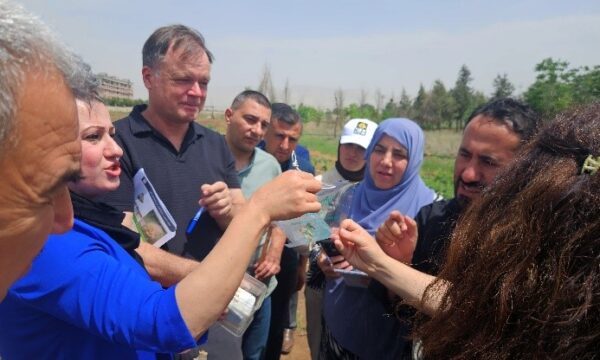
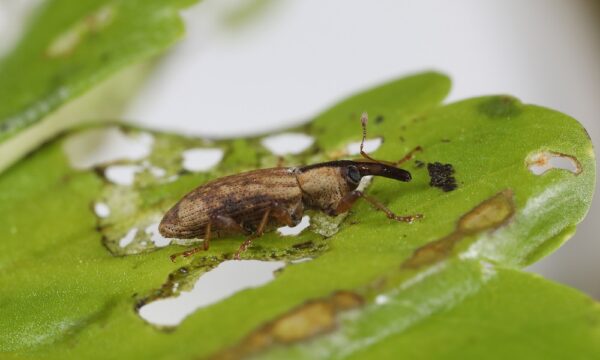


its really amazing blog I like it because I got what I need from it I recommended it to all of the views